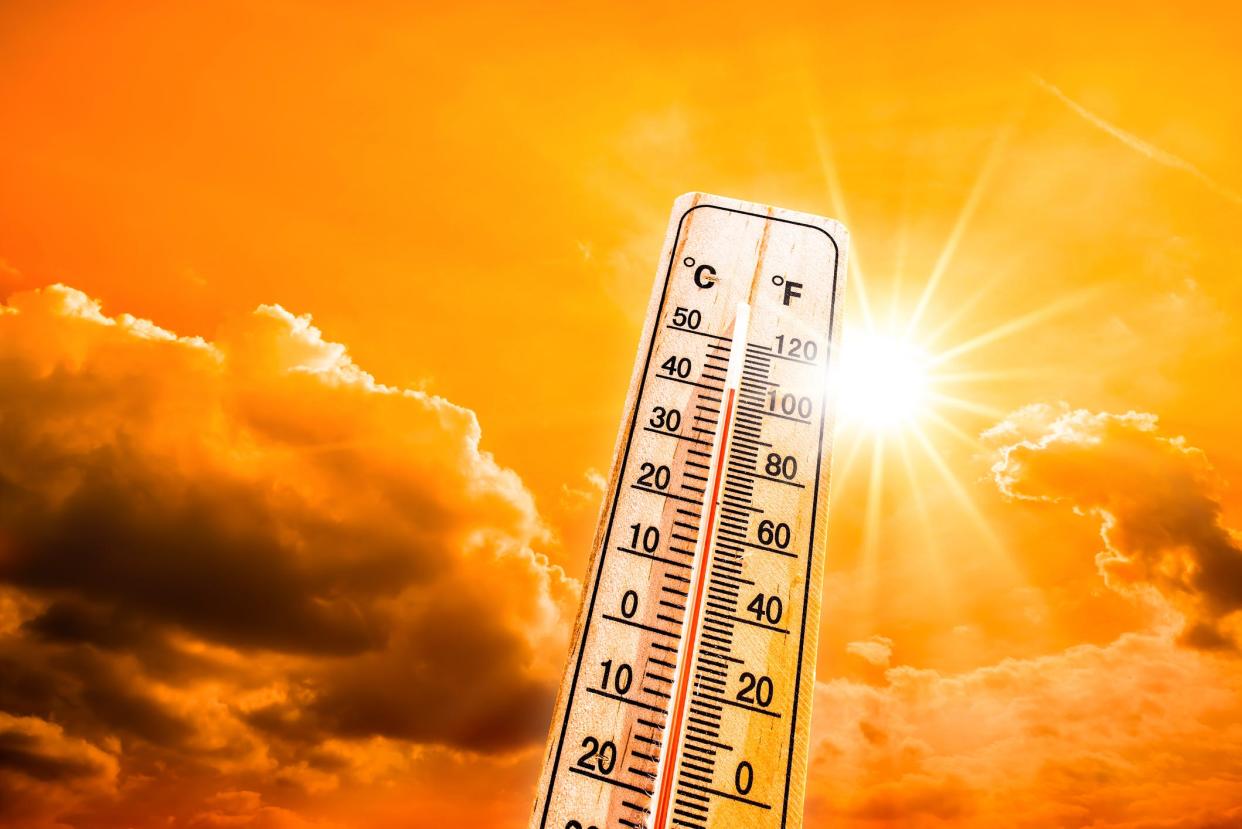Autumn brings heat wave to High Desert; Barstow, Victor Valley expected to reach 90s

Locals greeted the first day of autumn on Thursday by bidding farewell to cooler temperatures and welcoming the beginning of a mild heat wave that could last into next week in the High Desert.
Temperatures in the Victor Valley on Thursday reached the high 80s, with temperatures on Friday expected to range from the low to high 90s through Wednesday, according to the National Weather Service.
The Barstow area is expected to reach the high 90s from Friday through Sunday. Temperatures in the low 100s should arrive on Monday and Tuesday, before returning to the mid to low 90s.
Unlike the previous heat wave, don’t expect heavy and long lasting thunderstorms and rain in the High Desert this round, as the monsoon season is nearly over.
With the heat wave comes an increased risk of heat-related illness. Residents are advised to drink plenty of fluids, seek shaded areas and never leave children or pets inside vehicles unattended.
Hurricane Kay pushed back earlier heat wave
The change in temperatures comes after Hurricane Kay earlier in the month pushed back a tormenting heat wave over Southern California and introduced the Victor Valley to highs in the mid-80s.
During that time, overnight temperatures around the Victor Valley dipped into the 40s, with many residents turning off their AC units.
Welcome, autumn
The autumnal equinox is an astronomical event that marks the start of autumn or fall. In the Northern Hemisphere, the autumnal equinox occurs in September, and in March in the Southern Hemisphere, according to the Farmers Almanac.
During an equinox, the Sun crosses the “celestial equator,” or what many imagine as an extension of Earth’s equator line into space. The equinox occurs precisely when the sun’s center passes through this line as the Earth moves.
When is the autumnal equinox 2022?: How do you celebrate? Here's what you need to know
For those in the Northern Hemisphere, when the sun crosses the equator going from north to south, this marks the autumnal equinox; when it crosses from south to north, this marks the vernal equinox. In the Southern Hemisphere, it’s the reverse.
After the autumnal equinox, days become shorter than nights as the Sun continues to rise later and nightfall arrives earlier. This ends with the winter solstice, after which days start to grow longer once again.
The word “equinox” comes from Latin aequus, meaning “equal,” and nox, ”night.” On the equinox, day and night are roughly equal in length.
Daily Press reporter Rene Ray De La Cruz may be reached at 760-951-6227 or RDeLaCruz@VVDailyPress.com. Follow him on Twitter @DP_ReneDeLaCruz.
This article originally appeared on Victorville Daily Press: Heat wave expected to last until next week in the High Desert

